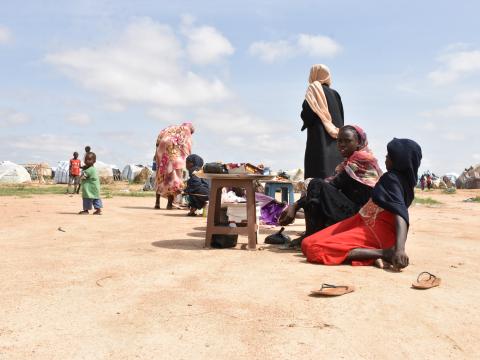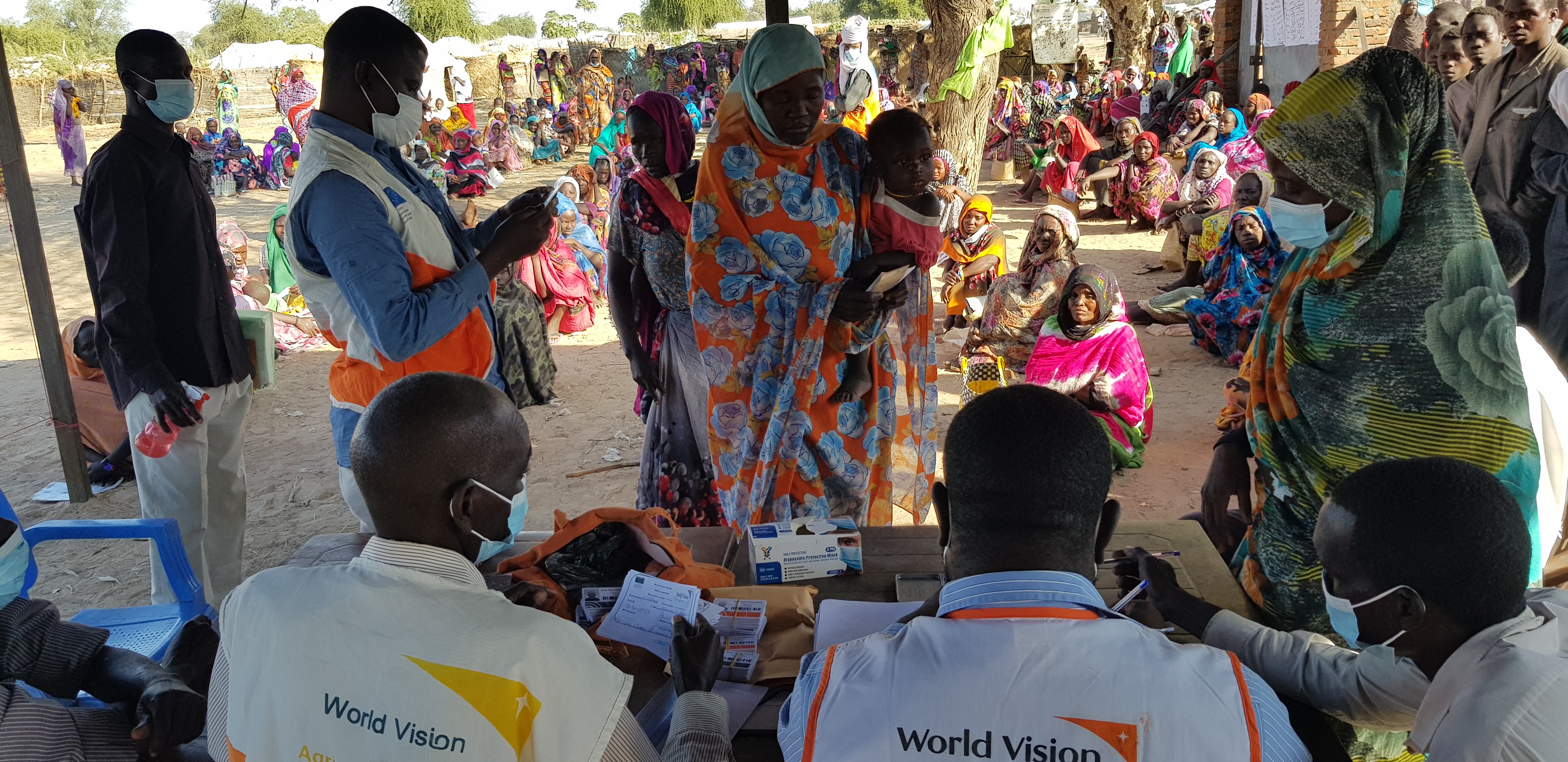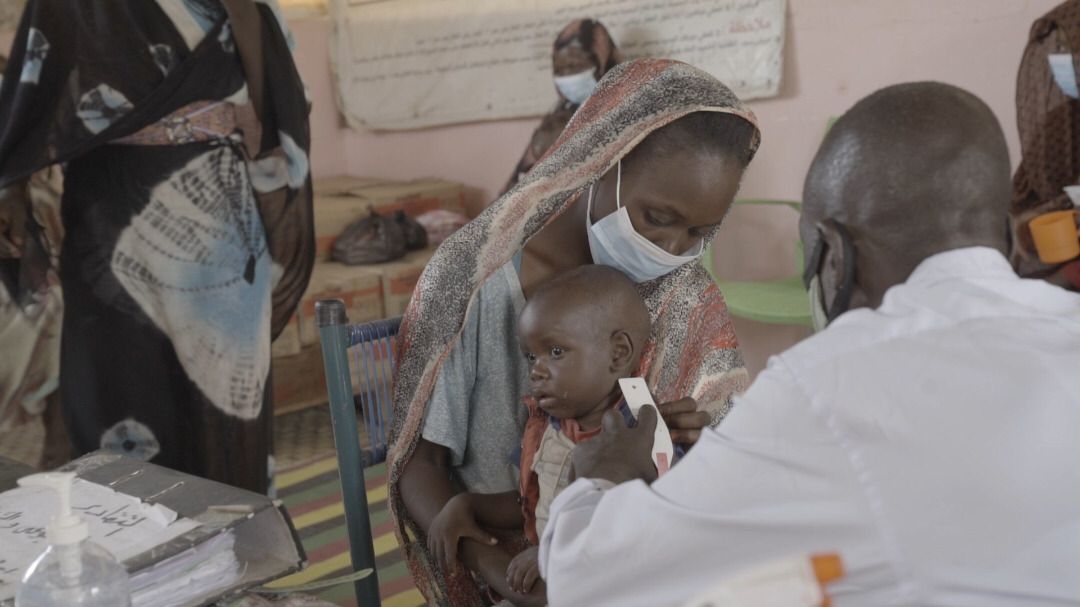Nearly 8 million children in Sudan will require urgent humanitarian assistance in 2022

Approximately 14.4 million people across Sudan –a third of the population, or one in every three people– will need humanitarian assistance in 2022. This is an increase of nearly a million people when compared to 2021, humanitarian partners estimate. Children, account for 55 per cent (7.8 million) of the humanitarian needs caseload- according to the 2022 Sudan Humanitarian Needs Overview (HNO).
An estimated 9.8 million of the people in need have been assessed as acutely food insecure, and will require food assistance in 2022. Of the food insecure people, at least 2 million people are living in four World Vision operational areas of South Darfur, East Darfur, South Kordofan and Blue Nile states.
Localised conflict, the ongoing economic crisis and climate change: Key drivers of humanitarian needs
Conflict remains a key driver of humanitarian needs for a majority of the vulnerable population. Nearly 60 per cent of the people in need are concentrated in areas affected by conflict. Conflict is a key driver of internal displacements which, as of December 2021, were estimated at 2.9 million –a majority of whom are in Darfur, Kordofan and Blue Nile; regions considered as epicentres of localised conflict for nearly two decades according to the context analysis of the 2022 Sudan HNO.
The prolonged economic crisis, characterised by high inflation and increased food insecurity, has been further exacerbated by COVID-19. Furthermore, the ongoing impact of climate change, characterised by recurring floods and droughts among other things, has also contributed to increased humanitarian needs and impacted millions, including the estimated 1.2 million refugees.
World Vision’s planned response
A critical humanitarian partner in providing assistance to affected populations, in partnership with the World Food Programme (WFP), in 2022, World Vision is targeting to reach an estimated 900,000 beneficiaries (349,000 estimated to be children) through integrated food and cash assistance across South Darfur, East Darfur and South Kordofan states.
Brian Mashingaidze, World Vision’s Sudan Food and Cash Assistance Programme Manager says that the organisation will continue implementing General Food Distribution and Unconditional Cash Transfers targeting 519,000 internally displaced persons, refugees and vulnerable host population in South Darfur and South Kordofan states.

Additionally, to improve affected communities’ resilience, World Vision will engage 63,000 target beneficiaries across South Darfur, East Darfur and South Kordofan states in community assets creation, and a diverse range of livelihoods activities. The choice of assets and livelihoods activities is a result of community-based participatory consultation process conducted by World Vision in partnership with WFP.
In 2022, World Vision will also continue to contribute towards improved enrolment, retention and concentration of children through its school feeding programme that will benefit 75,619 children across 117 schools in South Darfur state.
In summary, 2022 humanitarian needs broken down by sectors
The Water, Sanitation and Hygiene (WASH) sector has the highest number of people in need, accounting for 12.1 million people, followed by Food Security and Livelihoods (FSL) -10.9 million, and the Health sector, accounting for 10.4 million people in need.
Malnutrition remains a real threat, especially for vulnerable children under five years old. At least 4 million people (nearly 80 per cent of them children below five years) will need nutrition support and this includes life-saving therapeutic care and rehabilitation to avert exposure to risks such as malnutrition.

What's driving high malnutrition needs?
HNO assessments attribute high nutrition needs to a combination of factors, including inter-communal clashes and floods in 2021 that drove people out of their homes, and inflation which reduced people’s purchasing power; further deepening food insecurity in households and thus exposing children to malnutrition risks.
In 2021, World Vision’s nutrition officers and volunteers interviewed several mothers at one of the nutrition clinics in South Darfur, who attributed their children’s malnutrition conditions to food unavailability. As part of working to support families, World Vision’s interventions include mass screening of children to detect early risks of malnutrition and provide adequate nutrition care and support.
In addition, 4.2 million have been assessed as having education needs- out of school- due to the effects of different shocks and hazards on the educational system (source: 2022 Sudan HNO). Furthermore, 3.2 million children will need protection assistance.
-
Article by Lucy Murunga - Communications and Advocacy Manager - World Vision in Sudan